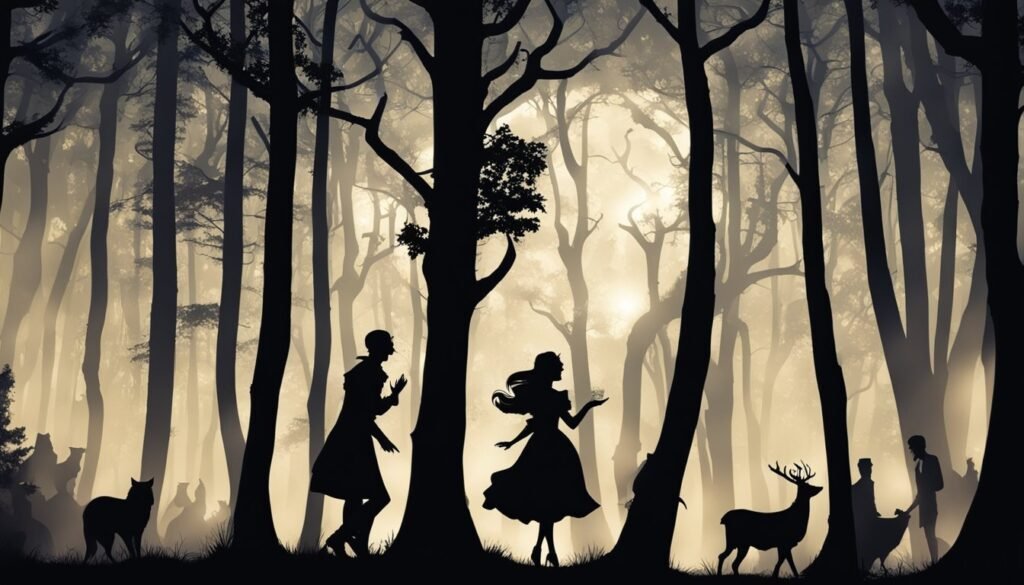Shadow figures in dreams are a common occurrence that can leave people feeling confused and scared. These mysterious figures appear in the dream world and can take on many different forms, from shadowy humanoids to animals or objects. While they can be unsettling, shadow figures in dreams can also provide valuable insights into the dreamer’s psyche.
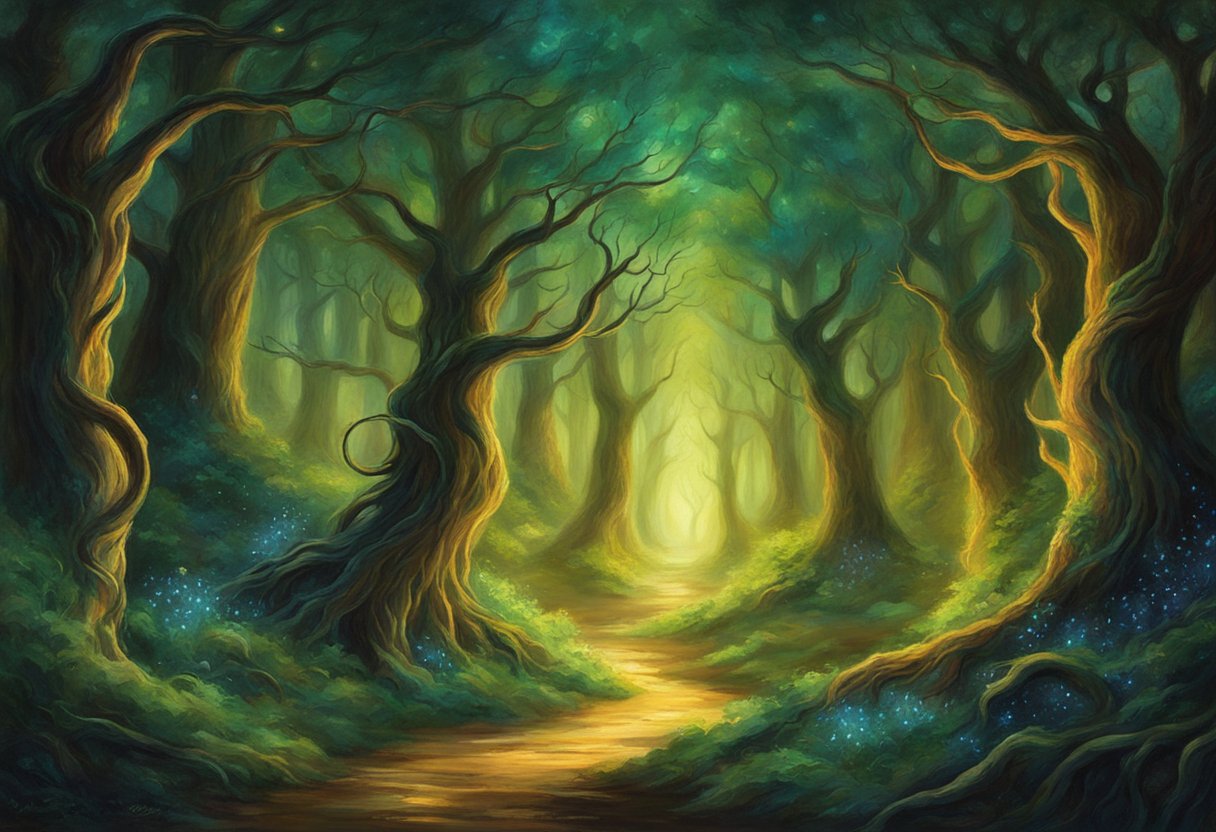
Understanding shadow figures in dreams requires an exploration of the common themes and symbols associated with these encounters. One interpretation is that shadow figures represent the unknown or hidden aspects of the dreamer’s psyche. These shadows may symbolize repressed emotions, hidden fears, or even unresolved conflicts. In dream analysis, shadow figures can be a prompt for the dreamer to confront these hidden aspects and integrate them into their conscious understanding.
Interpreting encounters with shadow people can be a complex process that requires an understanding of the emotional and psychological aspects of these experiences. While some people may interpret shadow figures as negative or malevolent entities, others may view them as protective or even benevolent. The interpretation of these encounters can vary depending on the individual’s personal experiences and beliefs. Therapeutic approaches to shadow figures can help individuals explore their dreams and gain a deeper understanding of themselves.
Key Takeaways
- Shadow figures in dreams can represent the unknown or hidden aspects of the dreamer’s psyche.
- Interpreting encounters with shadow people can be a complex process that requires an understanding of the emotional and psychological aspects of these experiences.
- Therapeutic approaches to shadow figures can help individuals explore their dreams and gain a deeper understanding of themselves.
Understanding Shadow Figures in Dreams
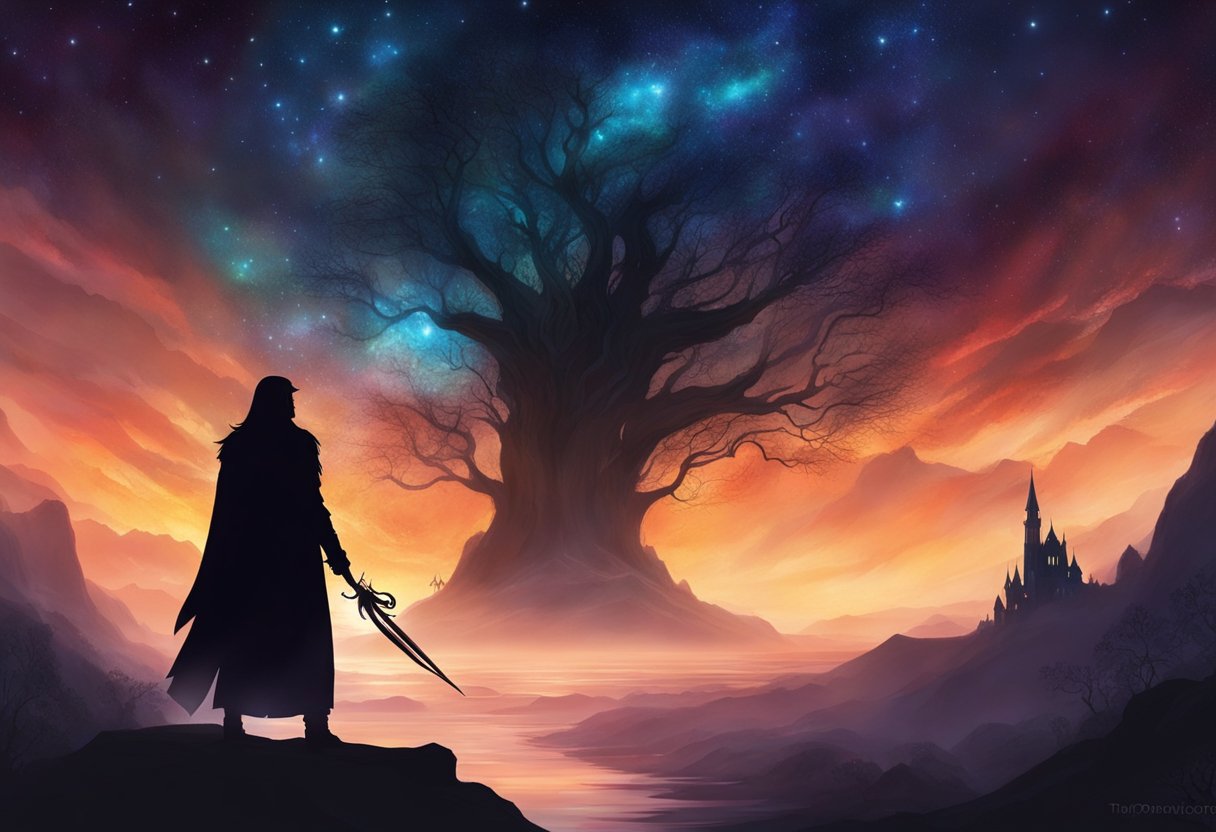
Dreams have always been a mysterious and fascinating topic for psychologists and researchers. One of the most common and intriguing dream experiences is encountering shadow figures. Shadow figures in dreams are dark, often featureless human-like shapes that can be perceived as menacing or malevolent. These figures can appear in various ways, such as standing still, moving, or even chasing the dreamer.
Psychological Significance
According to Carl Jung’s theory of archetypes, shadow figures in dreams can represent the unconscious or shadow self. The shadow self is the part of the subconscious mind that is composed of repressed or denied aspects of the self, such as fears, insecurities, and negative emotions. Dreams involving shadow figures can be an indication of the dreamer’s need to confront and integrate these neglected aspects of the psyche.
In dream analysis, shadow figures can also represent the unknown or hidden aspects of the dreamer’s psyche. These shadows may symbolize repressed emotions, hidden fears, or even unresolved conflicts. Dream interpretation experts suggest that dreaming about shadow figures may indicate a need for self-exploration and introspection.
Cultural Perspectives
Shadow figures in dreams are not limited to any particular culture or geographic location. However, some cultures have their own interpretations of shadow figures in dreams. For example, in Japanese culture, shadow figures are known as “kage-onna” or “shadow women.” These figures are believed to be the manifestation of a woman’s grudge or resentment, seeking revenge on those who wronged her.
In contrast, in African American culture, shadow figures are often associated with the supernatural and are believed to be spirits or ghosts. These figures are thought to be the manifestation of the ancestors or the spirits of the dead.
In conclusion, shadow figures in dreams can have different meanings depending on the individual’s personal experiences, cultural background, and psychological state. Understanding the psychological significance and cultural perspectives of shadow figures can provide valuable insights into the dreamer’s psyche and help them to confront and integrate the neglected aspects of their subconscious mind.
Common Themes and Symbols
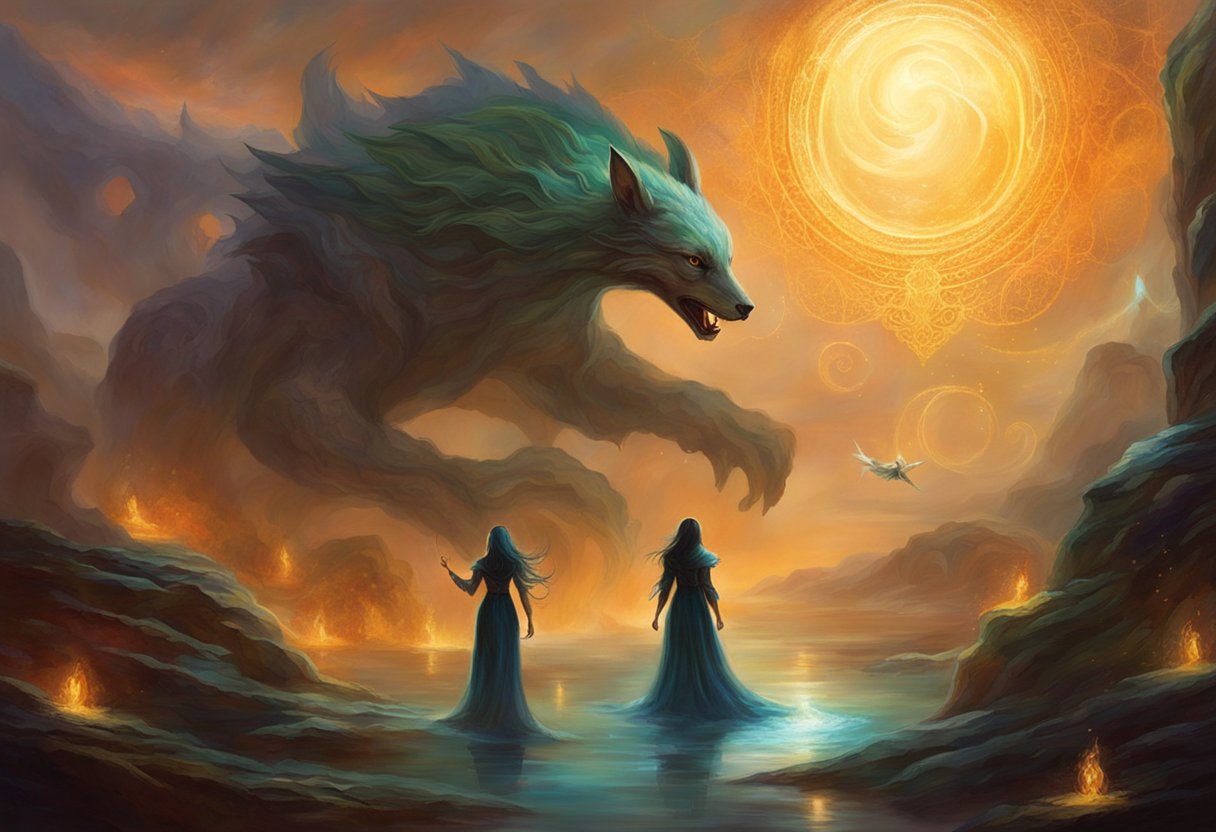
When it comes to shadow figures in dreams, there are several common themes and symbols that tend to appear. These can be divided into two categories: archetypal symbols and personal symbols.
Archetypal Symbols
Archetypal symbols are those that are shared across cultures and time periods. In the context of shadow figures in dreams, some of the most common archetypal symbols include:
- The shadow figure itself: This symbol can represent the unknown or the things that we fear. By confronting and exploring these fears in our dreams, we may gain insight and find a way to overcome them in our waking lives.
- The trickster: This symbol represents the part of ourselves that is mischievous and playful. In the context of shadow figures, the trickster may appear as a way of reminding us not to take ourselves too seriously.
- The shadowy stranger: This symbol represents the parts of ourselves that we have repressed or denied. By confronting these aspects of ourselves in our dreams, we may be able to integrate them into our conscious understanding.
Personal Symbols
Personal symbols are those that are unique to each individual. In the context of shadow figures in dreams, some of the most common personal symbols include:
- People from the dreamer’s past: These individuals may represent unresolved emotions or conflicts from the dreamer’s past.
- Animals: Animals may represent the dreamer’s instincts or primal desires.
- Objects: Objects may represent the dreamer’s relationship to material possessions or the physical world.
It’s important to note that the interpretation of symbols in dreams is highly personal and can vary from person to person. While some symbols may have universal meanings, others may be specific to an individual’s experiences and emotions.
Overall, the appearance of shadow figures in dreams can be a powerful tool for exploring the unconscious mind and gaining insight into our emotions and fears. By paying attention to the symbols and themes that appear in our dreams, we may be able to better understand ourselves and our place in the world.
Interpreting Encounters with Shadow People
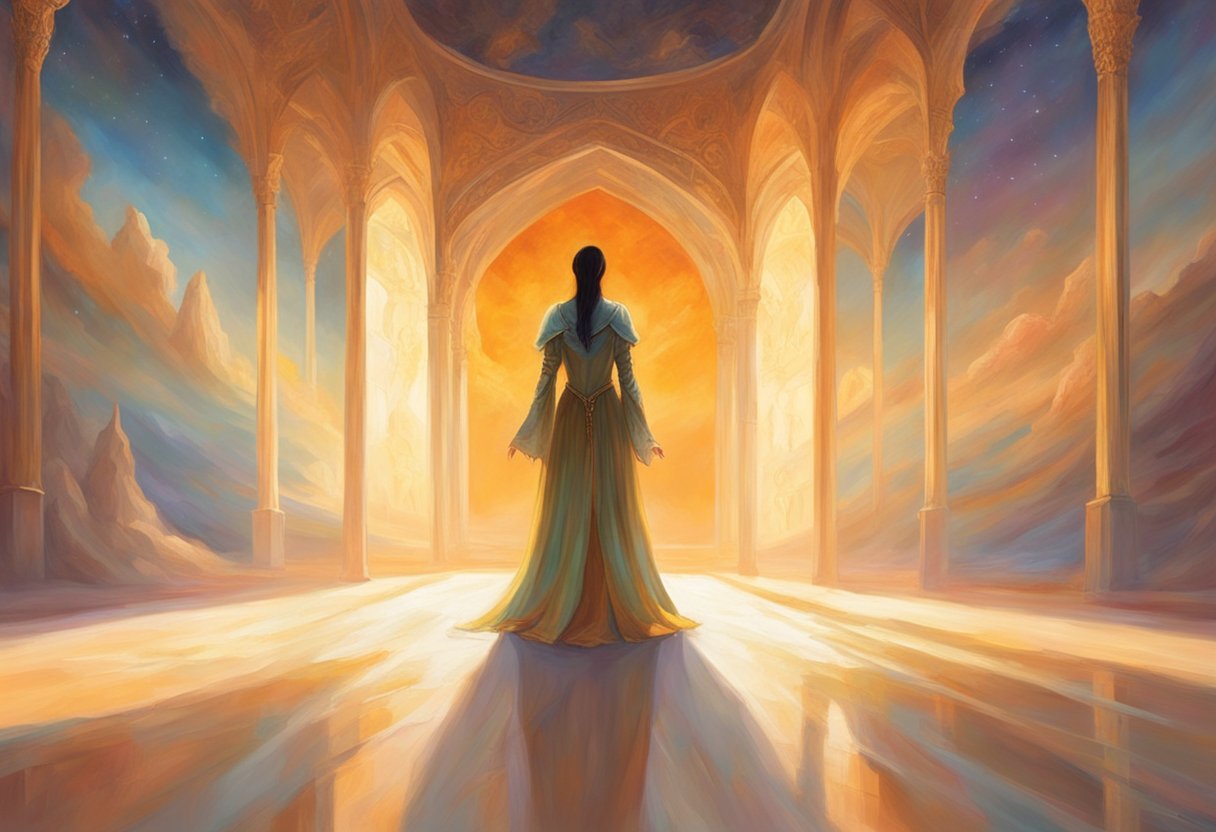
Encounters with shadow people in dreams can be unsettling and leave one feeling confused and anxious. However, these dreams can be interpreted in a variety of ways, depending on the context of the dream and the dreamer’s personal experiences and emotions.
Confrontation and Interaction
When encountering shadow figures in dreams, the dreamer may feel threatened or warned of impending danger. This can be interpreted as a manifestation of unresolved issues or fears that the dreamer may have in their waking life. The shadow figure may represent a part of the dreamer’s psyche that they have repressed or denied, and the dream may be a warning to confront these issues and emotions.
On the other hand, some dreamers may feel a sense of protection or guidance when interacting with shadow people in their dreams. This can be interpreted as a sign that the dreamer is ready to face their fears or that they are receiving guidance from their subconscious mind.
Recurring Shadow Figures
Recurring encounters with shadow figures in dreams can be particularly distressing. Dream interpretation experts suggest that these dreams may indicate a need for self-exploration and introspection. These dreams may be a reflection of the dreamer’s subconscious thoughts and fears, possibly related to unresolved issues or past traumas.
It is important to note that while encounters with shadow people in dreams can be unsettling, they are not necessarily indicative of a negative omen or warning. Instead, they can be seen as an opportunity for the dreamer to explore their innermost thoughts and emotions.
Emotional and Psychological Aspects
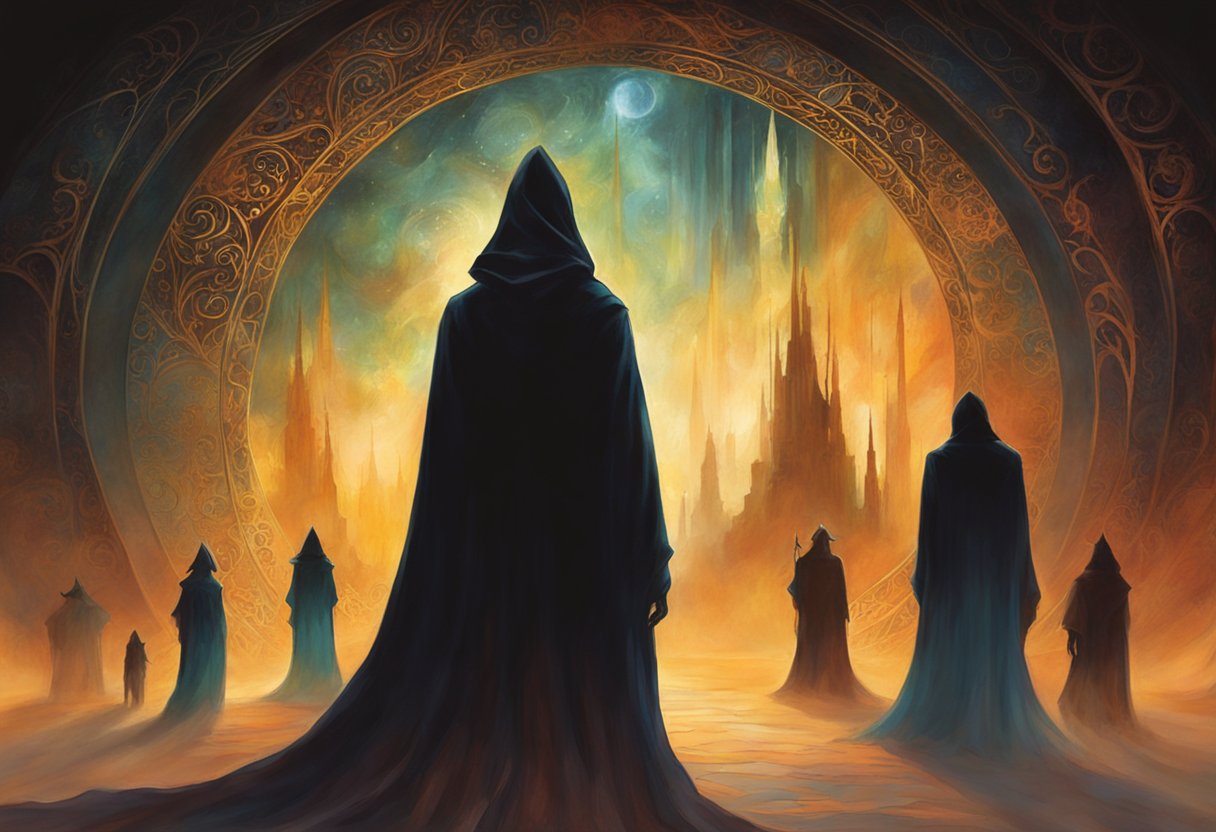
Dreams can be a reflection of one’s emotional and psychological state. Shadow figures in dreams can evoke a range of emotions, including fear, anxiety, stress, depression, and unease. Understanding the emotional and psychological aspects of these dreams can help individuals to interpret and integrate their experiences.
Fear and Anxiety in Dreams
One common emotional response to shadow figures in dreams is fear and anxiety. These emotions may be reflective of the dreamer’s fears and insecurities in waking life. According to Shunspirit, “the shadow figure can serve as a symbol of the unknown or the things that we fear.” The presence of shadow figures in dreams may indicate that the dreamer is facing a challenging situation or feeling uncertain about their abilities.
Depression and Unease
Shadow figures in dreams may also evoke feelings of depression and unease. These emotions may be reflective of the dreamer’s repressed emotions or unresolved conflicts. According to Dreamsguide, shadow figures may symbolize “hidden fears” or “even unresolved conflicts.” In dream analysis, shadow figures can be a prompt for the dreamer to confront these hidden aspects and integrate them into their conscious understanding.
In summary, shadow figures in dreams can evoke a range of emotions, including fear, anxiety, stress, depression, and unease. Understanding the emotional and psychological aspects of these dreams can help individuals to interpret and integrate their experiences.
Shadow Figures and Personal Growth

Dreams featuring shadow figures can be unsettling, but they can also offer valuable insights into the dreamer’s inner psyche. By exploring the symbolism behind these figures, one can gain a deeper understanding of their own fears, insecurities, and repressed aspects of their personality.
Repressed Aspects and Acceptance
Shadow figures in dreams can represent aspects of the dreamer’s personality that they have repressed or denied. These can be traits that the dreamer considers negative or unacceptable, such as anger, jealousy, or selfishness. By acknowledging and accepting these aspects of themselves, the dreamer can begin to integrate them into their conscious understanding, leading to personal growth and self-awareness.
Shadow Work and Integration
Working with shadow figures in dreams can be a powerful tool for personal growth. This process, known as shadow work, involves exploring and integrating the darker aspects of one’s personality. By facing and accepting these aspects, one can gain a greater sense of wholeness and balance.
Shadow work can be a difficult and challenging process, requiring vulnerability, strength, and a willingness to confront uncomfortable truths. However, the rewards can be significant, leading to greater self-awareness, emotional resilience, and a deeper sense of inner peace.
In summary, shadow figures in dreams can be a valuable tool for personal growth and self-discovery. By exploring the symbolism behind these figures and engaging in shadow work, one can gain a deeper understanding of their own fears, insecurities, and repressed aspects of their personality.
Paranormal and Supernatural Interpretations

Dreams involving shadow figures have been interpreted in various ways by different cultures and belief systems. While some interpret them as mere figments of the imagination, others believe that they represent paranormal or supernatural entities. In this section, we will explore some of the paranormal and supernatural interpretations of shadow figures in dreams.
Ghosts and Spirits
One interpretation of shadow figures in dreams is that they represent ghosts or spirits. According to this interpretation, the shadow figure is the manifestation of a deceased person’s spirit, who is trying to communicate with the dreamer. This interpretation is prevalent in cultures that believe in the existence of ghosts and spirits. For example, in Chinese culture, ghosts are believed to be able to take on different forms, including shadow figures.
Cultural Folklore
Another interpretation of shadow figures in dreams is based on cultural folklore. In many cultures, shadow figures are believed to be supernatural beings that can cause harm to humans. For example, in some African cultures, shadow figures are believed to be witches or sorcerers who can cast spells on people. In some Native American cultures, shadow figures are believed to be the manifestation of evil spirits.
In conclusion, dreams involving shadow figures can be interpreted in various ways, depending on the culture and belief system of the dreamer. Some interpret them as mere figments of the imagination, while others believe that they represent paranormal or supernatural entities. The interpretation of shadow figures in dreams is a fascinating subject that continues to intrigue people from different cultures and backgrounds.
Dreams and Personal Experiences

Dreams are an enigmatic phenomenon that have captivated humans for centuries. Many people have experienced dreams that involve shadow figures, which can be both fascinating and terrifying. In this section, we will explore personal experiences with shadow figures in dreams, including lucid dreams and nightmares.
Lucid Dreams and Control
Lucid dreams are dreams in which the dreamer is aware that they are dreaming and can sometimes control the dream’s content. In some cases, people have reported being able to control the appearance of shadow figures in their dreams. By becoming aware of the dream state, the dreamer can take control of the dream and change the course of events. This can be a powerful tool for overcoming fear and anxiety associated with shadow figures in dreams.
Nightmares and Distress
Nightmares involving shadow figures can be distressing experiences that can leave the dreamer feeling shaken and anxious. In some cases, people have reported being chased by shadow figures in their dreams, which can be a particularly frightening experience. While nightmares can be difficult to cope with, it is important to remember that they are a normal part of the dreaming process. Talking to a therapist or counselor can be helpful for those who experience chronic nightmares or distressing dreams.
In conclusion, dreams involving shadow figures can be both fascinating and terrifying experiences. While lucid dreams can provide a way to take control of the dream and overcome fear, nightmares can be distressing and leave the dreamer feeling shaken. It is important to remember that dreams are a normal part of the human experience and seeking help from a mental health professional can be beneficial for those who experience chronic nightmares or distressing dreams.
Therapeutic Approaches to Shadow Figures
Shadow figures in dreams can be unsettling and even traumatic for some individuals. However, with the right therapeutic approaches, they can be used as a tool for self-discovery and healing. Here are some common approaches that therapists use to help individuals cope with shadow figures in their dreams.
Dream Analysis and Therapy
Dream analysis is a common therapeutic approach that helps individuals explore the hidden meanings and symbolism in their dreams. By examining the content and context of the dream, a therapist can help the individual gain insight into their unconscious mind and the issues that may be causing the appearance of shadow figures in their dreams.
Therapists who specialize in dream analysis may use various techniques to help individuals interpret their dreams, including free association, active imagination, and dream journaling. By exploring the themes and emotions present in the dream, individuals can gain a deeper understanding of their psyche and the issues that may be causing the appearance of shadow figures in their dreams.
Coping Strategies and Healing
For individuals who experience intense fear or trauma related to their shadow figures, coping strategies and healing techniques may be helpful. Coping strategies can include mindfulness exercises, relaxation techniques, and cognitive-behavioral therapy (CBT) to help individuals manage their anxiety and fear.
Healing techniques such as EMDR (Eye Movement Desensitization and Reprocessing) can be used to help individuals process and heal from traumatic experiences related to their shadow figures. EMDR involves a series of guided eye movements that help the individual reprocess the traumatic memory and reduce its emotional impact.
Closure can also be an important part of the healing process. By acknowledging and accepting the presence of shadow figures in their dreams, individuals can gain a sense of closure and move forward with their lives.
In conclusion, shadow figures in dreams can be a powerful tool for self-discovery and healing when approached with the right therapeutic techniques. By exploring the hidden meanings and symbolism in their dreams, individuals can gain insight into their unconscious mind and the issues that may be causing the appearance of shadow figures. Coping strategies and healing techniques can also be used to manage anxiety and trauma related to shadow figures, allowing individuals to gain closure and move forward with their lives.
Frequently Asked Questions
What is the significance of being attacked by a black shadow in a dream?
Experiencing an attack by a black shadow in a dream can be a frightening experience. According to some interpretations, it could signify a feeling of being overwhelmed by negative emotions, such as fear, anxiety, or depression, or feeling powerless in a particular situation. However, it is essential to remember that dream interpretation is subjective, and the meaning can vary from person to person.
What could it imply if I am chased by a dark figure in my dream?
Being chased by a dark figure in a dream can be a common occurrence and can signify a feeling of being pursued by one’s fears or anxieties. It could also represent a sense of danger or threat in waking life. However, it is crucial to consider the context of the dream and the emotions involved to interpret its meaning accurately.
What is the interpretation of a dream featuring a black hooded figure with no face?
A dream featuring a black hooded figure with no face can be a terrifying experience. According to some interpretations, it could represent a sense of unknown or uncertainty in one’s life. It could also signify a feeling of being trapped or confined by one’s fears or anxieties. However, it is essential to remember that dream interpretation is subjective, and the meaning can vary from person to person.
How can a white shadow appearing in a dream be interpreted?
A white shadow appearing in a dream can be interpreted as a symbol of positivity, purity, or spiritual enlightenment. It could also represent a sense of peace or calmness in one’s life. However, it is crucial to consider the context of the dream and the emotions involved to interpret its meaning accurately.
What are the common interpretations of nightmares involving dark shadows?
Nightmares involving dark shadows can be a common occurrence and can signify a feeling of being pursued by one’s fears or anxieties. It could also represent a sense of danger or threat in waking life. However, it is essential to consider the context of the dream and the emotions involved to interpret its meaning accurately.
What does it signify to encounter a shadow woman in your dreams?
Encountering a shadow woman in a dream can be interpreted as a representation of the feminine energy or the anima, which is the unconscious feminine side of a male. It could also represent a feeling of being in touch with one’s emotions or intuition. However, it is crucial to consider the context of the dream and the emotions involved to interpret its meaning accurately.

